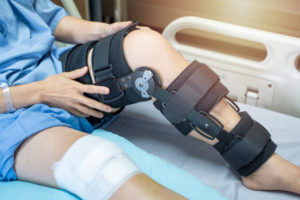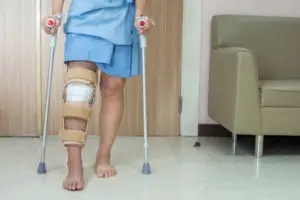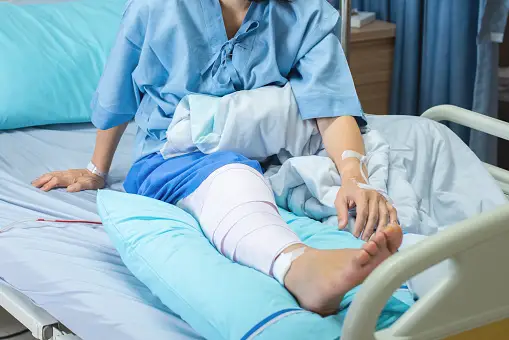If you have recently undergone ACL surgery, then you may be wondering what you can and cannot do. In this article, we will discuss what not to do after ACL surgery and some guidelines that will help ensure a smooth and speedy recovery!
What Is An ACL Surgery?
An anterior cruciate ligament (ACL) is a procedure to repair the torn ligament. It stabilizes the knee by preventing the shinbone from sliding out in front of the femur. A tear in the ACL can cause the knee to give way during activities such as walking, running, or pivoting.
ACL surgery is performed to restore knee stability and relieve pain. The procedure is typically done arthroscopically, which means that it uses small incisions and minimal disruption to the surrounding tissue. In some cases, an open surgical approach may be necessary.
Recovery from ACL surgery generally takes several months. Physical therapy is an important part of the rehabilitation process. Most people can return to their previous level of activity after completing physical therapy and regaining full range of motion and strength in the knee.
If you have a torn ACL, your doctor may recommend surgery to repair it. ACL surgery is a safe and effective procedure that can help you regain knee stability and return to your normal activities.

Accidents That Cause ACL Injuries
The most common mechanism of ACL injury is a sudden stop or change in direction while the foot is planted, causing the knee to twist. This can happen when playing sports such as soccer, basketball, football, or tennis.
Other causes of ACL injuries include:
- Direct contact to the knee, such as a tackle in football
- A non-contact injury, such as landing awkwardly from a jump
- Slow, gradual overuse of the knee joint
What Not To Do After ACL Surgery?
Even though it is a common surgery with a very high success rate, ACL surgery is still a major operation that requires a significant amount of time to recover. It is important to follow your doctor’s instructions and the physical therapist’s guidance during the rehabilitation process.
This means that you should not try to do too much too soon. Your body needs time to heal and recover from surgery, so it is important to take things slowly at first.
Here are a few things you should avoid doing after ACL surgery:
- Don’t put any weight on your leg until your surgeon or physical therapist tells you it is okay.
- Don’t bend your knee past 90 degrees.
- Don’t cross your leg over your body at the knee.
- Don’t kneel on your operated leg.
- Don’t wear high heels.
- Don’t sleep on your stomach or side with your operated leg straight.
In addition to avoiding high-impact activities, you also want to make sure that you are not overdoing it with your rehabilitation exercises. It is important to follow the guidelines set forth by your physical therapist or surgeon to avoid putting too much strain.
Finally, you want to make sure that you are taking care of yourself both physically and mentally during your recovery. This means eating a healthy diet, getting enough sleep, and reducing stress as much as possible. These things will all help your body heal and recover from surgery more quickly.
Physical Therapy After ACL Surgery
Physical therapy is an important part of the rehabilitation process after ACL surgery. Physical therapy can help you regain range of motion and strength in your knee, as well as improve your overall function.
The physical therapy protocol will vary depending on your situation and needs. However, there are some general principles that all patients should follow.
After ACL surgery, it is important to start moving your knee as soon as possible to prevent stiffness. You will likely be given exercises to do while you are still in the hospital. Once you are discharged, you will need to continue doing these exercises at home.
It is also important to keep the area around your incision clean and dry. Your physical therapist or surgeon will give you specific instructions on how to care for your incision.
In addition to range-of-motion and strength-training exercises, your physical therapy may also include activities such as balance training, agility training, and plyometrics. These activities are designed to help you regain the skills you need to return to your previous level of activity.
Most people can expect to complete physical therapy within four to six months after surgery. However, some people may need a longer period of rehabilitation.

Returning To Activity After ACL Surgery
The timeline for returning to the activity will vary depending on the individual. In general, however, most people can expect to return to their previous level of activity within six to 12 months after surgery.
Before returning to activity, it is important to get clearance from your physical therapist. You should also make sure that you have regained full range of motion and strength in your knee.
It is also important to ease back into activity gradually. You want to avoid any high-impact activities or activities that require quick twisting or pivoting movements. Instead, start with low-impact activities and progress to more strenuous activities as your knee heals.
If you take the time to rehabilitate properly and follow your doctor’s orders, you can expect to return to your previous level of activity without any problems.
What are the Risks of Not Following Doctor’s Orders After ACL Surgery?
There are several risks associated with not following doctor’s orders after ACL surgery. The most serious of these is the risk of re-injuring the ACL.
If you do not give your knee enough time to heal, you may put too much stress on the ACL and cause it to fail again. This can lead to further damage to the knee joint and may require additional surgery.
In addition to the risk of re-injury, there are also risks associated with not completing physical therapy or not following a proper rehabilitation protocol. These risks include:
- Poor range of motion
- Reduced strength
- Impaired function
- Increased risk of arthritis
Conclusion
ACL surgery is a serious procedure that requires a significant amount of time for recovery and rehabilitation. However, if you follow your doctor’s orders and complete a proper rehabilitation program, you can expect to return to your previous level of activity without any problems.
